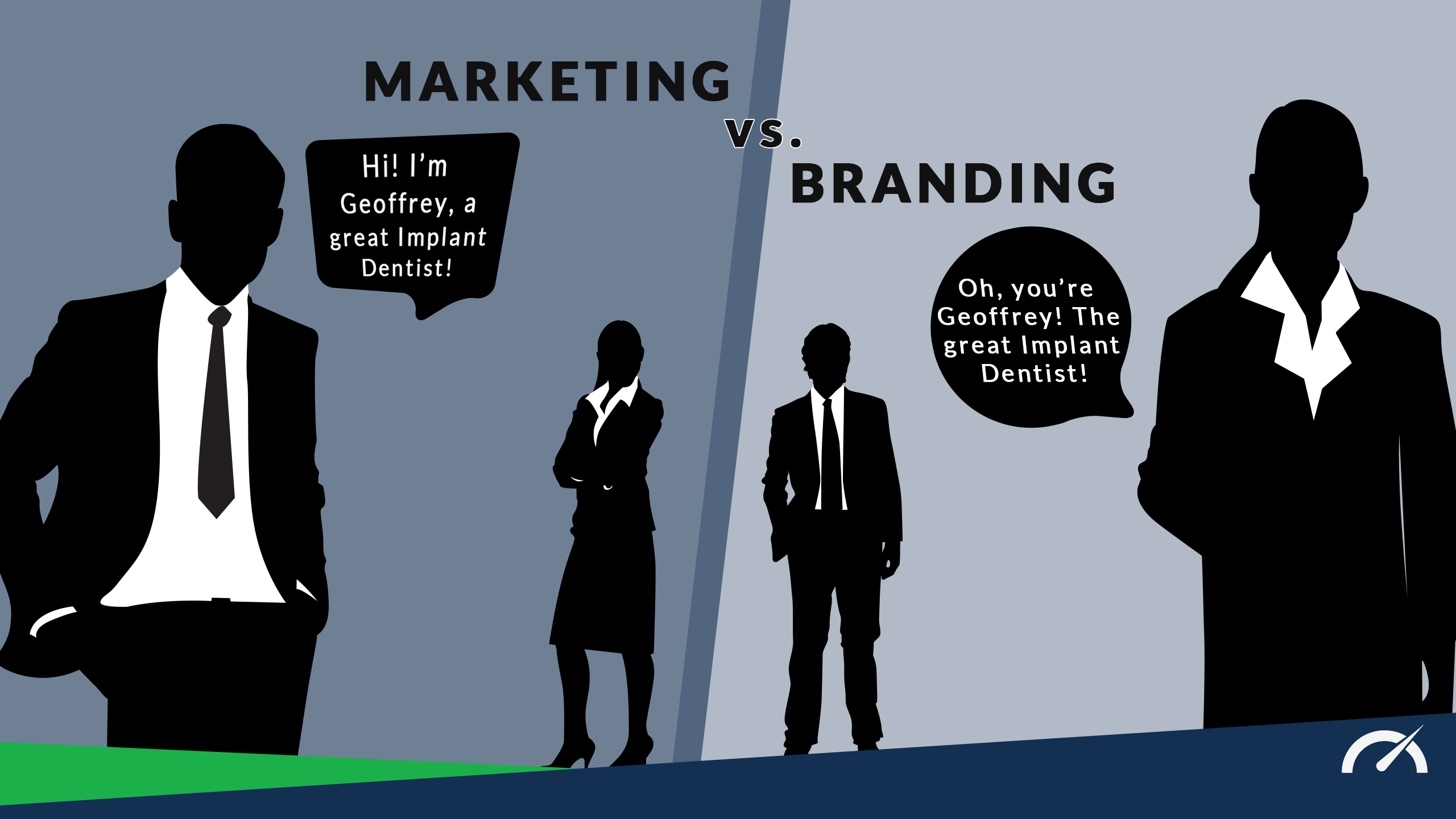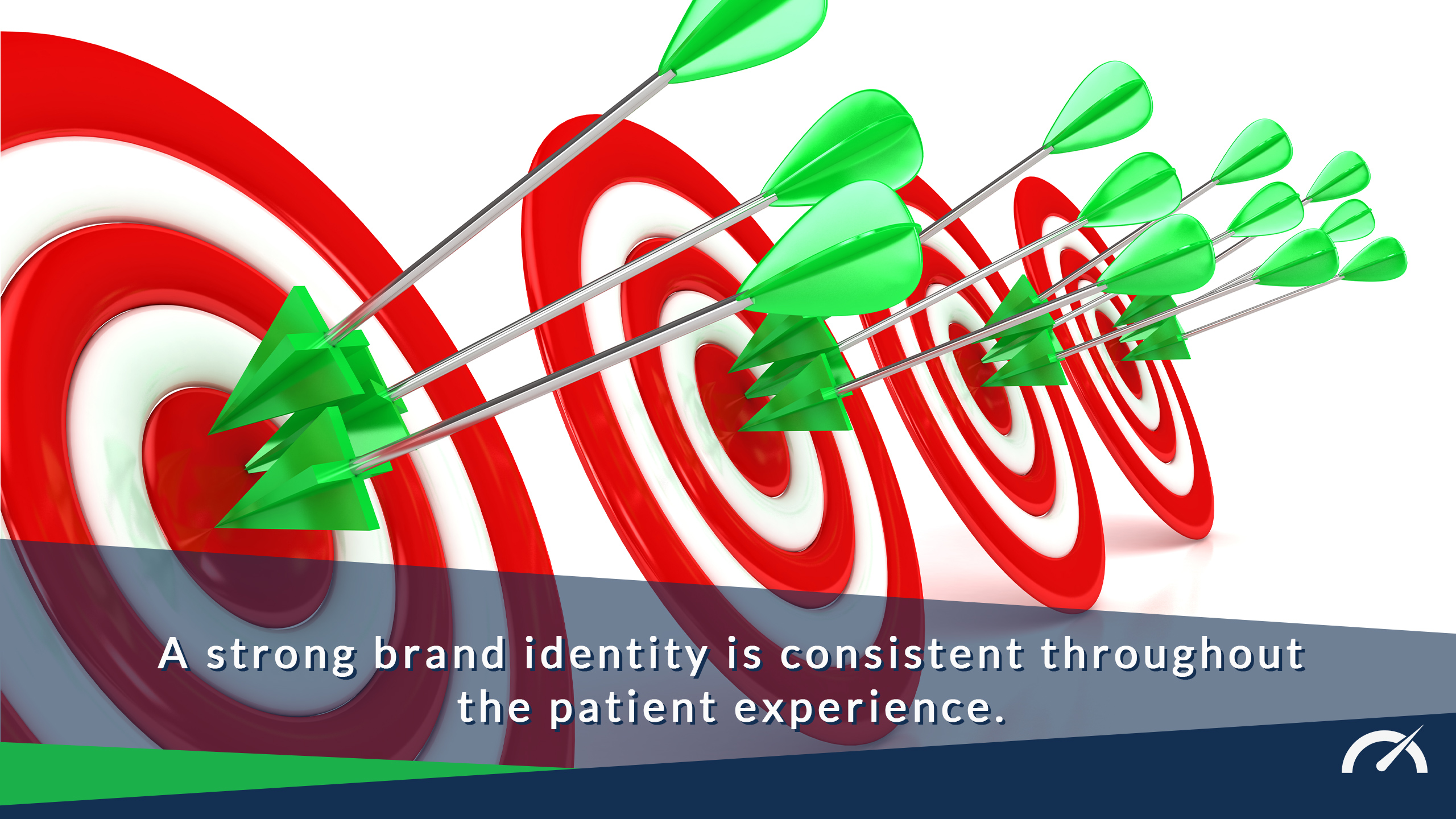In the digital age, having a powerful brand identity is paramount for any business. While some businesses fail to understand or implement branding, others do, and they reap the reward.
A dental practice with a powerful brand will outperform a practice with an inconsistent brand. Having a strong brand identity will improve your practice’s marketing immensely, especially as you market dental implants. When your brand identity is powerful, your case acceptance rate will go through the roof, because people will come to you, trust you, enjoy working with you, and then tell their friends about you.
One shining example of branding wizardry is the grocery chain Trader Joe’s. They have a powerful identity and people love them for it. It also led them to exponential growth in the 1990s and 2000s, opening 505 stores in 42 states. Thanks to their strong brand, they outperform almost everyone in their industry.
Everything in a Trader Joe’s store follows a strict brand guideline. Everything from the signage, employee uniforms, and even the product names fits into their theme. If you want Trader Joe’s-level results in your business, develop Trader Joe’s-level branding.
2 things you need to understand first:
Before diving into building your brand identity, there are a couple of important principles to understand.
Your Brand Is Extremely Important.

First, your brand conveys the story of your practice to the world around you. When your brand is powerful and consistent, people immediately understand who you are and what you have to offer. Your ideal patient will be attracted, and patients who aren’t a good fit will know to look elsewhere.
The best brands know their ideal audience and consistently appeal to them.
Branding Is Not The Same Thing As Marketing.

Second, there are key differences between branding and marketing. Sometimes when we read about “branding” it’s easy to place it into the same mental category as “marketing,” but there are differences that matter for your practice.
Distinct from branding itself, marketing is what puts your brand to work. Without a strong brand, you have nothing good to market. Marketing means showing your offer to the audience and inviting them to accept it. It requires specific actions and measuring the results.
But the customer doesn’t connect to your marketing; they connect to your brand. In this sense, your brand is who you are, and your marketing is what you do. If you don’t have a powerful brand identity, you will fail to connect with your customers in your marketing and miss out on potential patients.
With that in mind, here are five steps to gaining a powerful brand identity in your practice, so that you can consistently win cases with your ideal patients.
1. Decide who you are as a dental implant practice.

The foundation of a strong brand is a strong sense of identity. Beyond just your logo, reputation, and tactics, your brand influences every aspect of who you are. So, who are you?
Will your practice be high-end or cost-flexible? Do you prize quality or convenience? Will you come off as casual or sophisticated?
Consider these examples from the world of insurance. Many consumers feel a personal connection to Flo from Progressive or the gecko from Geico. These characters are more than mascots; they form a visual representation of the business that created them. Both appeal to certain members of the population and show what the business is like.
Both are friendly and casual, refusing to take themselves too seriously. But Geico shows you that it values saving time and money, while Progressive shows you that it values customizability.
To start forming your practice’s identity, determine your top three values. Then ask yourself what your primary value proposition will be. From there, develop a way to communicate your values quickly and effectively, like an elevator pitch or mission statement. It could even look like developing a mascot or spokesperson (spokes-gecko?) for your own practice.
2. Identify your audience.

The next step is to identify the people your brand appeals to most. This goes hand-in-hand with your top values because your primary values attract a certain kind of person. So, who is this person? This is also known as developing a buyer persona, a portrait of your ideal patient.
Two examples of a strong buyer persona also come from the world of insurance: State Farm and USAA. State Farm has a playful, casual tone meant for mass appeal. They frequently bring in celebrities from the world of sports and entertainment for their advertisements. While they want everyone to feel like they’re getting an ‘insider deal’ by going with them, their recent advertisements show that their target demographic is young and hip.
On the other hand, USAA has a more selective audience, since they are designed for the military and their family. Their commercials take on a more real-life tone, with their most recent ads showing the true lives of their customers. They want their audience to know that as they transition out of the military, USAA has their back.
Take some time to develop a buyer persona of your own. Who is that ideal patient? Get specific. If you can, list their age demographic, income, and primary personality traits. The clearer picture you make, the easier it is to know your design and language will appeal to them.
STOP GENERATING LEADS, GET PATIENTS INSTEAD
Stop chasing unqualified leads and wasting your valuable chairtime. Learn how to fill your operatories with patients who are pre-qualified and serious about moving forward with your high-value treatment.
3. Develop your design.

Did you know that the color red can invoke a sense of desire and urgency? The designers at State Farm do. On the other hand, did you know the color blue promotes relaxation and a feeling of order? Progressive does.
Your design flows from your brand identity and attracts your buyer persona. Design is not just your logo, though your logo is an extremely important component. Your design is also your colors, fonts, primary shapes and motifs, and even your lobby furniture.
For the best results, create a style guide or bring in a professional designer to help you with one. First, make sure your logo, website, and social media match your design. After this, match the graphics in your ads and blogs to the rest.
4. Create your copy.

“Copy” is writing that prompts a buying decision. In the world of branding, all writing is copy. The language you use on your website and social media forms an essential piece of your marketing stack. This means all your writing should line up with your core identity, appeal to your audience, and harmonize with your design.
One fantastic example of this comes from the fast-food restaurant Wendy’s. In the 2010s, their main value proposition pivoted from “quality” to “joy.” Though they still value quality, they wanted their audience to equate their brand with fun and mirth first.
To reflect that, they took an extremely lighthearted and sassy tone on social media, especially their Twitter account. They even went so far as to poke fun at other fast-food companies. This form of copy quickly won over their ideal audience.
When your identity, audience, and design are decided, then your copy “fills in the gaps.” Every word should convey who you are and what you have to offer. Quality copy on your social media and website will help patients decide to accept your case, and consistently posting quality content will establish you as an authority in the world of dental implants. Consider taking a course or bringing in a professional copywriter to ensure your copy wins your audience over.
5. Maintain consistency everywhere.

Finally, and perhaps most importantly, make sure your brand is consistent across the board. Everything should match.
Take paid ads for example. If your ads on Facebook and Google don’t match the look/feel of your website, then it will cause a disconnect. Everything you do creates expectations in the head of the prospective patient that should be met by the next piece they see.
One way to maintain consistency is to have one person working on all of your design, or one writer working on all of your copy. Another way is to develop a detailed brand guideline. Because branding influences every part of your practice, this isn’t limited to the digital world. Make sure even your lobby, staff, and equipment are all aligned with your practice’s persona.
How strong is your brand identity?
Reflect for a moment on your current brand. Some reading this will know who they are and who they want to attract, and some won’t. Regardless of where you sit, there is always something you can do to ensure you gain a more powerful brand identity. When you start attracting your ideal patient, and they accept your case presentations more frequently, you’ll know that the hard work paid off.
If you want help with brand identity in your dental implant practice, don’t hesitate to book a free strategy call with us.
